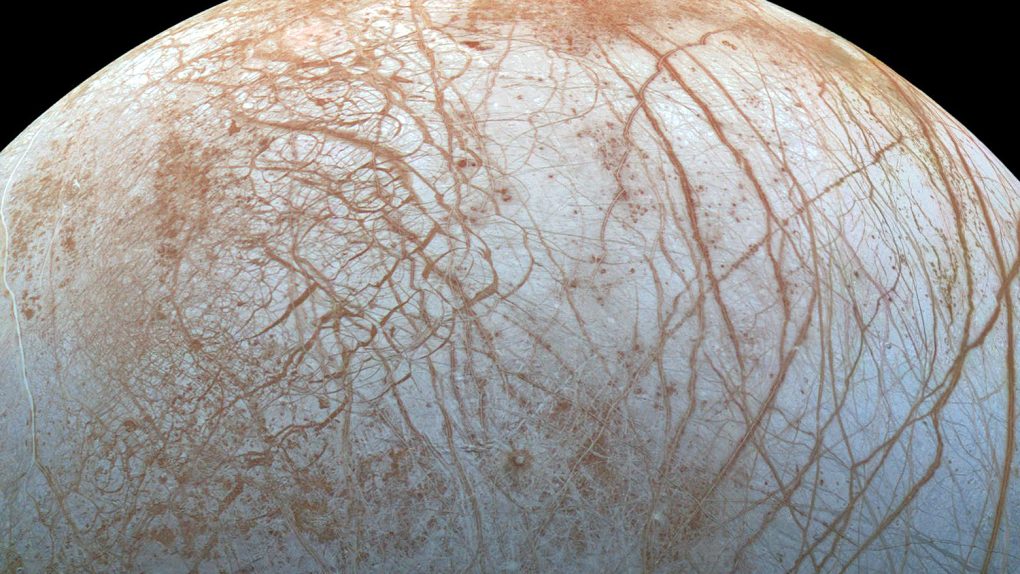- Jupiter’s moon Europa may have a vast ocean of water beneath its surface, and new data from Galileo supports that theory.
- Researchers found that a lack of protons over Europa’s north pole could indicate an active water plume.
- Tidal forces prevent the water from freezing, but whether life exists there remains a mystery.
- Visit BGR’s homepage for more stories.
Jupiter’s moon Europa is an incredibly interesting place. It’s a massive ball of ice that scientists believe is hiding a vast ocean of liquid water. Proving that there’s water buried beneath the crust is tricky, but a new study reveals that data gathered two decades ago supports that theory.
As Gizmodo reports, a new paper published in Geophysical Research Letters focuses on readings taken by NASA’s Galileo spacecraft way back in 2000. During that mission, Galileo’s Energetic Particle Detector was constantly on the lookout for charged particles moving rapidly through space. When the spacecraft cruised over Europa’s north pole, its particle detector noted a dearth of protons.
At first, scientists studying the data couldn’t explain why and attributed the odd data to Europa possibly hindering the instrument and preventing it from detecting the particles. Now, with hindsight in their favor, researchers came up with a different and extremely exciting explanation.
More recent observations of Europa by the Hubble Space Telescope revealed what appears to be plumes of water being blasted into space. In simulating the conditions of Europa’s atmosphere and the plume of water vapor, the researchers discovered that the lack of protons during Galileo’s flyby is likely evidence that it passed by an active plume.
“What is new here is that part of the decrease can be explained by charge exchange, a process whereby the protons are removed after they lose their electrical charge in Europa’s thin atmosphere,” the researchers explain. “Furthermore, we see that there is a special decrease, which can be explained by an erupting plume of water vapor, thereby providing additional evidence for an active plume during Galileo flyby E26.”
It was long believed that icy worlds like Europa and Saturn’s Enceladus were solid. More recently, scientists have offered explanations of how water in liquid form could still exist deep beneath the frozen crust. Tidal forces from their host planets provide enough energy to keep the water from fully freezing, and cracks in the icy crust allow some of that liquid to spew into space.
Of course, the big question still remains: If these icy moons have vast oceans hiding inside, does that mean life could exist there? We simply don’t know. It would be mighty dark in those subsurface oceans, but as we’ve seen on our own planet, life can still exist in an absence of sunlight. Future missions could reveal the secrets hiding within Europa and Enceladus, but for now, we’ll just have to wait and wonder.







